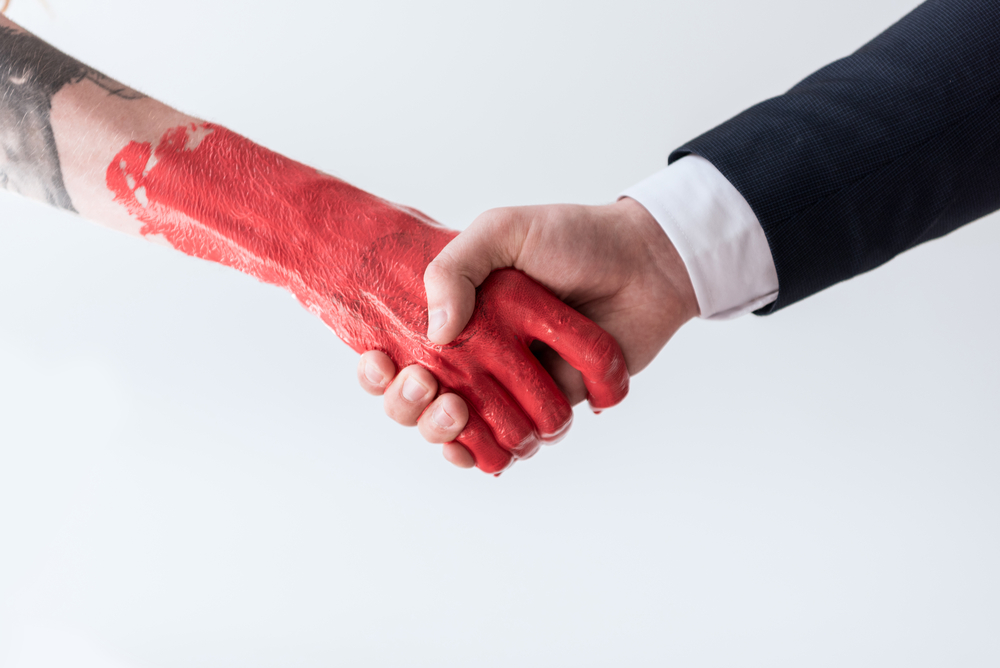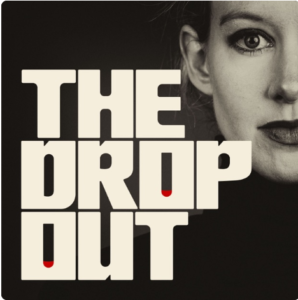
A #ReadWithMe series. Read Part 1.
As Theranos’s profile as a company, and Elizabeth Holmes’s profile as a startup star, began to rise, Holmes began a publicity push unlike anything seen before.

She worked with Errol Morris, director of The Thin Blue Line, on a set of promotional videos that focused on patients’ fears about blood tests, and Theranos’s promise to provide a better patient care experience. Holmes appeared at Glamour’s Women of the Year awards. Forbes 30 under 30. She was interviewed on CNN and CBS This Morning. She was on the covers of Forbes, Inc., Fortune, and Bloomberg Businessweek. She even got a feature in the Style section of the New York Times.
By 2014, Theranos was valued at almost 10 billion dollars. Holmes personally was worth 4.5 billion.
And the technology still didn’t work.
More shockingly than that, perhaps, is that none of the media coverage of Holmes and Theranos seemed particularly interested in how, or if, the Theranos machines functioned. Her unsupported claims were simply repeated.
How unsupported were those claims? When Vice President Joe Biden came to visit Theranos he was shown a fake lab, with machines rigged to play video of tests being run. It was at this point that I paused the podcast, by the way, and googled “con games” to see if I could find the technical term for what Theranos reminded me of. I was hard pressed to see much distinction between the show put on for Biden’s visit and what con artists call the “Big Store”–where elaborate props and sets and a team of confederates are used to build a false front to persuade marks that real business is happening. (See The Sting, Leverage, or Hustle for examples).
Audio clips from the deposition of Holmes make it clear that she was more or less indifferent to the fact that the Theranos machines weren’t working. Instead, she and Balwani bought commercial blood testing machines from Siemens and used them to run the tests instead.
Rather than pouring her vast amount of investment funding into trying to get the machines to work, Holmes hired Chiat/Day the advertising firm that produced Apple’s most iconic ads to publicize Theranos–and herself–with an 11 million dollar campaign. Employees at Chiat/Day who worked on the account report that they were stonewalled when seeking information about how the technology worked. This made it almost impossible to verify the claims that Holmes and Balwani wanted to see in the advertising, and meant that copy had to be constantly altered to avoid illegal claims.
The Chiat/Day team also discovered, while working on the account, that Theranos did not have a lab in Phoenix. Instead, all the blood from all the tests done at all the Theranos wellness centers in all the Arizona Walgreens was FedExed to Palo Alto for testing. The issues with security, biohazard safety, and the potential deterioration of blood samples were immediately apparent. And as Balwani casually admits in his deposition, it was all done to avoid the need for FDA approval.
But Theranos’s board, including Henry Kissinger, General James Mattus, George Shultz, Senator Bill Frist, and Admiral Gary Roughead, were still solidly on board with Holmes and her claims. And with names like those on the board, combined with all the press coverage and the Walgreens deal, investors kept coming. The Walton family, the De Vos family, Rupert Murdoch, everyone wanted in.
“The Dropout” leans on its strength of bringing us the voices attached to the stories again in this episode. Eileen Lepera, a retired executive assistant, who invested $150,000 in Theranos, seems grimly resigned to the loss of her investment, made based on the “knowledge and advice” of the people who sold her on it. But it is the voices of those who got test results from Theranos that stay with me from episode three. There is Sheri Ackert, a breast cancer survivor and double mastectomy patient, whose Theranos test results indicated she had a new tumor. But the test was wildly wrong, and Ms Ackert was fine. Dr. Pallav Sharda got a test result indicating that he was pre-diabetic.He retook the test at another lab. The Theranos test was wildly wrong, and Dr. Sharda was fine.
But the human costs of Theranos were rising.
In episode four, finally, someone speaks out.
One of the great questions raised by the Theranos scandal is why it took so long for someone to point out that the emperor had no clothes. Throughout the first three episodes of the podcast, employee after employee mentions that they were essentially, just waiting for the news to break. Why didn’t any of them speak up?
Part of the reason seems to be that Holmes and Balwani’s response to any questioning or criticism of Theranos policies or technology was to accuse and harass the people who brought it up. Turnover was high, even for a startup, and constant. When tests failed or were unreliable data was massaged and cherry-picked in order to provide acceptable results. But the tech problems that caused the bad results were never fixed.
And then Holmes hired Tyler Shultz, George Shultz’s grandson. Tyler Shultz seems to have bounced into Theranos like a ball cap wearing lacrosse player sliding into the back row of class ten minutes late. He cheerfully notes that he got his internship because Holmes wanted to charm his grandfather.
But Shultz almost immediately noticed that the Theranos machines didn’t work and that the information his grandfather was getting was entirely different from what he saw in the lab every day. George Shultz heard about cutting edge blood testing. Tyler Shultz saw machines that got caught in their own gears, needed their doors taped shut, and–as I keep saying–just didn’t work. But thought Tyler Shultz and his friends at Theranos thought it was funny to joke about the wild inaccuracy of, for example, Theranos tests for STDs, he was increasingly concerned about people like his grandfather, getting their blood tested by Theranos.
He anonymously contacted Board of Health regulators, who asked him to file an anonymous report. He also sent an email to Holmes, detailing the issues he had noticed. Holmes promised to look into it, but Balwani responded with a threatening demand for an apology. So Tyler Shultz quit.
Tyler Shultz’s full story is available in his podcast “Thicker Than Water,” and I may visit that in my final post. What is important here is that, at the same time that he was filing his reports and leaving Theranos, others were beginning to dig as well. Dr. Jon Ionnides started to look into Theranos and found that there were no scientific publications about Theranos’s research. (Ordinarily, one would expect a startup with such a radical new technology to produce hundreds or thousands of papers about their work.) John Carreyrou, author of Bad Blood and investigative reporter, was also beginning to be suspicious. Holmes’s credentials just didn’t seem to add up to someone who would be likely to produce world-altering research.
But Theranos was well protected. The big names on its board and the intimidating reputation of its outside council, David Boies, served to keep a lot of employees quiet. Even Tyler Shultz, protected by about as much privilege as one can have in America, was terrified to talk with Carreyrou. He was right to be. He and other anonymous sources were followed, handed threatening letters by strangers, and threatened with lawsuits. Shultz’s grandfather was enlisted to get him to sign a confidentiality agreement to “make everything go away.” When he showed up to discuss the situation with his grandfather, he found two Theranos lawyers there waiting for him.
Soon the FDA was showing up to do a surprise inspection of the Theranos labs.Tyler Shultz was hiring lawyers, and he and another source, Erika Cheung were talking to Jon Carreyrou. And on October 15, 2015, the Wall Street Journal began to run Carreyrou’s work, and Theranos began to get the kind of publicity that no fancy documentaries and no iconic advertising firms could hope to counteract.

READER COMMENTS
Alan Goldhammer
Aug 19 2020 at 5:39pm
Con artists have always been a part of American history. This era is no different. You can do equally good stories on Enron, WorldCom, and others. Theranos is no different other than a bunch of very famous people got blinded by the light of Elizabeth Holmes.
Joseph McDevitt
Aug 20 2020 at 10:03am
Funny How the Con artist out con the real con artists, Kissinger, Mattus, Shultz and the rest of the people we elect to office.
Phil H
Aug 21 2020 at 12:59am
There’s quite a history now of things “not working” until they do. Most obviously in the tech sector: Amazon didn’t make money for a very long time, and the first iPhone was kinda rubbish. The history of medicines not actually working at first is also quite well known (things like scurvy treatments and heart medicines that turn out to work for erectile dysfunction).
So among certain kinds of investor, there’s an acceptance of early phase teething troubles that can last for years. Obviously the hype around Theranos was egregious, but it’s not that clear to me that everyone should have seen through them sooner.
Stretch
Aug 21 2020 at 8:40pm
but it’s not that clear to me that everyone should have seen through them sooner.
It was clearly a scam. Why a fashion shoot if the technology works? Why a slick ad if the technology works? My father-in-law Gordy always talked about the milk pail. His father needn’t ask if Gordy milked the cows, he could just look in the pail. Miss Holme’s pail was always empty…
Comments are closed.